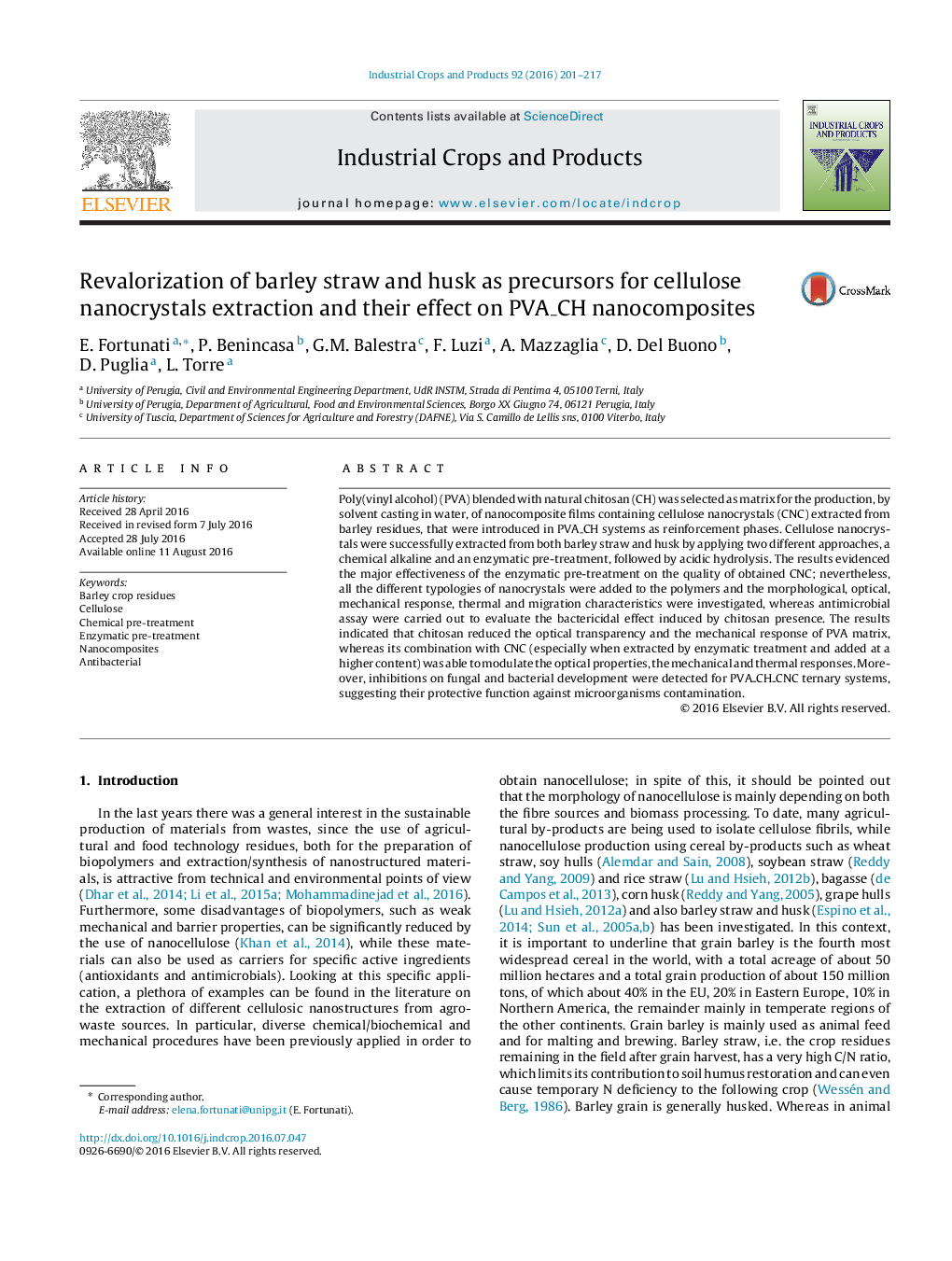| Article ID | Journal | Published Year | Pages | File Type |
|---|---|---|---|---|
| 4512045 | Industrial Crops and Products | 2016 | 17 Pages |
•Cellulose nanocrystals (CNC) were successfully isolated from barley straw and husk.•Chemical and sustainable enzymatic pre-treatments were evaluated for CNC extraction.•The enzymatic pre-treatment resulted more effective for CNC extraction.•CNC were successfully used as fillers in PVA_chitosan based nanocomposite films.•Chitosan and CNC modulated the optical, mechanical and antibacterial responses of PVA.
Poly(vinyl alcohol) (PVA) blended with natural chitosan (CH) was selected as matrix for the production, by solvent casting in water, of nanocomposite films containing cellulose nanocrystals (CNC) extracted from barley residues, that were introduced in PVA_CH systems as reinforcement phases. Cellulose nanocrystals were successfully extracted from both barley straw and husk by applying two different approaches, a chemical alkaline and an enzymatic pre-treatment, followed by acidic hydrolysis. The results evidenced the major effectiveness of the enzymatic pre-treatment on the quality of obtained CNC; nevertheless, all the different typologies of nanocrystals were added to the polymers and the morphological, optical, mechanical response, thermal and migration characteristics were investigated, whereas antimicrobial assay were carried out to evaluate the bactericidal effect induced by chitosan presence. The results indicated that chitosan reduced the optical transparency and the mechanical response of PVA matrix, whereas its combination with CNC (especially when extracted by enzymatic treatment and added at a higher content) was able to modulate the optical properties, the mechanical and thermal responses. Moreover, inhibitions on fungal and bacterial development were detected for PVA_CH_CNC ternary systems, suggesting their protective function against microorganisms contamination.
